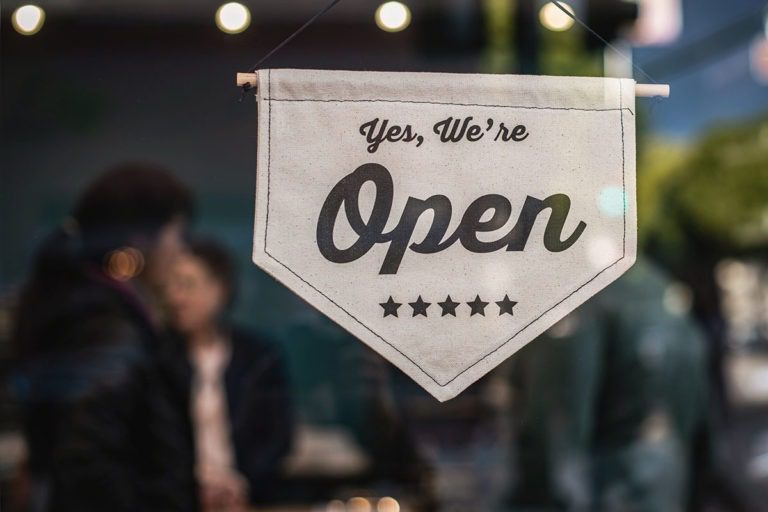As the roadmap has been outlined for hospitality businesses, it’s time to start focusing on the details of reopening!
As the old saying goes, ‘perfect planning prevents poor performance’, however this time it’s not just about metrics, but the health & safety of your teams and customers.
Below we’ve put together some information and resources on the 4 S’s; Staffing, Suppliers, Sites & Sales to help you prepare your business and ensure you hit the ground running. Let’s get businesses running from 0 – 60 mph as efficiently & effectively as possible.
Staffing
Team communication – whether you have a WhatsApp chat or communication tech like Yapster, it’s key your teams know when and how they will be back at work. Put in place a process for Q & A to make this as accessible as possible. Video conferencing platforms like Zoom have proved invaluable to businesses and families for keeping in touch and are ideal for this type of communication.
Shift planning – It’s important to not only plan your schedules based on who needs to work to meet demand, but also to reduce the number of contacts made. Stagger your shifts & create work patterns where certain people work together on the same shifts, e.g. divide your kitchen & server teams into groups who work together, and don’t mix them. Another option is to run restricted opening times, running a smaller team and assigning shorter shifts to ensure a fair distribution of hours.
Training – Your employees may have been on furlough for quite a while so it will be essential to focus some time on personal development and up-skilling your teams, but now is the time to train them on the practical problems faced with social distancing restrictions. This must be done prior to opening up, and your team will need updating on compliance as well as procedures. Where you can, do this virtually. However, you most likely need to get the team on site, so careful consideration towards whois trained and when is also needed.
Forecasting/Planning – Your staffing levels will need careful consideration as you operate with less staff due to social distancing. Safety must remain paramount, so consider how you might operate your business efficiently and effectively.
Health & Safety – How will I keep my team safe? Are they well enough to come back to work? These are just some of the concerns that you should be considering. PPE is vital so take ownership and ensure you can provide masks and gloves for your teams before you even consider reopening. Put together a health questionnaire for staff wanting to work to ensure only those who are healthy will be on-site.
The Food Standards Agency’s fitness for work guidance for staff who handle food products provides advice on managing sickness in a food business. Understanding this guidance and applying it on both a personal and business level can help to prevent the transmission of coronavirus (COVID-19).
Sickness – If anyone becomes unwell with a new, continuous cough or a high temperature in the business or workplace, they should be sent home and advised to follow the stay at home guidance. If you or an employee are experiencing symptoms, visit NHS 111 online or call 111 if there is no internet access. In an emergency, call 999 if they are seriously ill or injured, or their life is at risk. Do not visit the GP, pharmacy, urgent care centre or a hospital.
If a member of staff has helped someone who was taken unwell with a new, continuous cough or a high temperature, they do not need to go home unless they develop symptoms themselves. They should wash their hands thoroughly for 20 seconds after any contact with someone who is unwell with symptoms consistent with coronavirus infection.
Suppliers
Like most businesses, your suppliers may have less staff working to prevent the risk of infections to teams and customers, so check in with key suppliers well in advance of opening. Let them know your plans and get those orders ready.
Stock levels and variety may not be what it was prior to the lockdown, so consider how this will impact your product range and menu items. My advice is keep it simple to start with. Similar to considerations of staffing, the team may not be able to work at the speed/efficiency they had before, so match the menu and product range to this reality; keep choice to a minimum for customers; and focus on what your team can deliver quickly and simply.
It’s not only your menu that you may need to consider, but the consumables: Do you have enough/the right Take-out materials? Make sure you have enough stock, and crucially make sure your supplier can maintain those stock levels for the foreseeable future.
If you are solely sticking to take-away, then here’s a great blog from Deliveroo about what to consider when choosing packaging.
Sites
So your team is ready and your suppliers have got those orders in, but how are your sites looking? Chances are no-one has been in since lockdown initiated, so the place should be close-down clean. However, it would be sensible to spend a day on site preparing the business.
First up: Spring clean – for some the lockdown provided an opportunity to stand still briefly and with that give your sites some TLC. Get those big cleaning jobs done now and get your sites looking fresh.
Have you set up social distancing boundaries on site? – The advice on social distancing measures applies to everyone. You need to minimise opportunities for the virus to spread by maintaining a distance of 2 metres between individuals and so preparing your sites for both your team and customers needs:
For your team –
- Think about how the team will work and serve customers, do some role play onsite to see what needs moving and to where
- Make sure stock is as accessible as possible for the right person
- Use tape to mark out boundaries along with furniture
For your customers –
- Use additional signage to ask customers not to enter the shop if they have symptoms
- Regulate entry so that the premises do not become overcrowded
- Use floor markings inside the commercial spaces to facilitate compliance with the social distancing advice of 2 metres, particularly in the most crowded areas, such as serving counters and tills
- Use vertical signage to direct customers into lanes if feasible to facilitate movement within the premises while maintaining 2 metre distance
- Make regular announcements to remind customers to follow social distancing advice and clean their hands regularly
- Place plexiglass barriers at tills and counters if feasible, as an additional element of protection for workers and customers
- Encourage the use of contactless payments where possible, without disadvantaging older or vulnerable customers
- Provide additional pop-up handwashing stations or facilities if possible, providing soap, water and hand sanitiser
Further information on social distancing and adults who are at increased risk of coronavirus (COVID-19) can be found on GOV.UK.
Sales
How will your customers know you are open and what can you do to maximise sales once you are open.
Social media – Now an everyday part of your marketing. Start early to let people know your plans, build some hype and then drive the momentum for when you go live. Here’s a quick guide with some examples on how to do just that!
Simplify the options – Keep your offering as simple as possible whilst maintaining variety, this makes it easy for not only your customer but also your teams and will help you maintain those margins.
We’d love to know what your reopening plans are. Don’t hesitate to contact us by phone, email or social media if you have any questions:
Phone:
(UK) +44 203 642 5644
(IRE) +353 (1) 254 2524
Email: [email protected]
Help Centre: Click Here
Twitter DM: @Bizimply
LinkedIn: Bizimply









